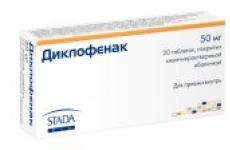Non-residential premises depreciation group. The organization acquired non-residential premises for an office on the first floor of a panel apartment building. Which depreciation group can be attributed to this non-residential premises for the purpose of calculating income tax
Answer:
Office acquired by the organization non-residential premises located on the ground floor of a panel residential apartment building, for the purpose of determining the useful life and calculating income tax, in our opinion, in 2016 could be attributed to the subsection "Dwellings" OK 013-94. According to the Classification of fixed assets, dwellings (residential buildings) are classified as
From January 1, 2017, this object can be attributed to the grouping 210.00.00.00.000 "Buildings (except for residential)" of the All-Russian classifier of fixed assets OK 013-2014 (SNA 2008) and to tenth depreciation group(property with a useful life of over 30 years).
Rationale:
In tax accounting in accordance with paragraph 1 of Art. 258 of the Tax Code of the Russian Federation, depreciable property is divided into depreciation groups in accordance with its useful life. The useful life is the period during which the item of fixed assets is used to fulfill the purposes of the taxpayer's activities.
The useful life is determined by the taxpayer independently on the date of commissioning of the depreciable property in accordance with the provisions of Art. 258 of the Tax Code of the Russian Federation and taking into account the Classification of fixed assets included in depreciation groups, approved by Decree of the Government of the Russian Federation of 01.01.2002 N 1 (hereinafter referred to as the Classification of Fixed Assets). The list of property that belongs to fixed assets is established by OKOF.
Until January 1, 2017, the All-Russian classifier fixed assets OK 013-94, approved by the Resolution of the Gosstandart of Russia dated December 26, 1994 N 359 (hereinafter - OK 013-94), according to which the premises built into buildings and intended for shops, canteens, hairdressing salons, ateliers, rental points of cultural and household items purpose and household use, kindergartens, nurseries, post offices, banks and other organizations, the purpose of which is other than the main purpose of the building, are part of the main building. Despite the fact that this clarification concerned the subsection "Buildings (other than residential)", we believe that the above can be attributed to the subsection "Dwellings".
Thus, according to the current OK 013-94, for the purpose of determining the useful life and calculating income tax, non-residential premises located in a residential apartment building, can be attributed to the subsection "Dwellings" OK 013-94. According to the Classification of fixed assets, dwellings (residential buildings) are classified as tenth depreciation group with a useful life of over 30 years (code 13 0000000).
In connection with the publication of the Order of Rosstandart N 2018-st, OK 013-94 in force since January 1, 2017 has ceased to be valid.
In the introduction to the new OK 013-2014 states that if various premises of the same building (including premises built into buildings) have different owners (including in the privatization of apartments) or are used for different types activities, the objects of classification can be separate premises. We believe that non-residential premises located in a residential building can be attributed to the grouping 210.00.00.00.000 "Buildings (except for residential)" OK 013-2014.
In this case, the non-residential premises are located on the first floor of a panel apartment building.
According to the Classification of Fixed Assets, buildings (other than residential) with durable coatings are classified as tenth depreciation group(property with a useful life of over 30 years). Such a period is established for buildings (except for residential), with the exception of those included in other groups (with reinforced concrete and metal frames, with walls made of stone materials, large blocks and panels, with reinforced concrete, metal and other durable coatings). In some cases, based on technical characteristics, panel buildings can be attributed to seventh depreciation group.
Thus, we believe that in the above situation, based on the characteristics given in the Classification of Fixed Assets, non-residential premises for offices on the first floor of a panel residential apartment building belong to the tenth group (property with a useful life of over 30 years) (OKOF OK 013-2014 grouping 210.00.00.00.000).
The information is provided by the ConsultantPlus legal reference system.
With an actual split in Russian Federation accounting and accounting for tax purposes, the issue of recording business transactions in such a way that, on the one hand, optimizes the tax burden, and on the other hand, minimizes the costs associated with maintaining parallel tax accounting, arises.
One of the important issues in the activities of the enterprise is the determination of the useful life for the purposes of accounting and taxation of fixed assets, in particular those that have a service life of more than 30 years, such as buildings and structures.
When determining the useful life of depreciable property for tax purposes, one should be guided by the provisions of Article 258 of the Tax Code of the Russian Federation ():
"Depreciable property is divided into depreciation groups in accordance with its useful life. The useful life is the period during which an item of fixed assets or an item of intangible assets serves to fulfill the purposes of the taxpayer's activities. The useful life is determined by the taxpayer independently as of the date of commissioning of this an object of depreciable property in accordance with the provisions of this article and taking into account the classification of fixed assets approved by the Government of the Russian Federation. "
The classification of fixed assets used to determine their useful life is established by the Decree of the Government of the Russian Federation "On the classification of fixed assets included in depreciation groups" dated 01.01.2002 No. 1 ().
In accordance with this decree, buildings with reinforced concrete and metal frames, walls made of stone materials, large blocks and panels, with reinforced concrete, metal and other durable coatings are classified as fixed assets, the useful life of which is over 30 years.
Thus, the minimum useful life of a building that can be set for tax purposes is 30 years and 1 month (361 months).
The Tax Code of the Russian Federation gives a taxpayer the opportunity to independently determine the useful life of a fixed asset within a specific depreciation group.
In this case, the following factors can play a significant role:
engineering features of the building, which will make it possible to establish a useful life significantly exceeding the minimum;
the organization's tax planning policy.
At the same time, the establishment of the shortest possible useful life will significantly increase the expenses of the organization, taken into account when calculating income tax.
Maximum useful life of the object regulatory documents not limited.
Clause 1 of the said Resolution of the Government of the Russian Federation established that the classification of fixed assets approved by it "can be used for accounting purposes."
Given the fact that the concepts of the useful life of a fixed asset in accounting and tax accounting are identical, the values of such a period for taxation and accounting purposes will be the same.
The documentary confirmation of the fact of establishing a certain useful life of a fixed asset can be an act of acceptance and transfer of fixed assets (form No. OS-1), which contains the relevant details. Thus, the establishment of a specific useful life will be certified by the signatures of the members. admissions committee... Thus, the organization has the right to establish any useful life of the building, but not less than 30 years and 1 month, both for accounting and tax purposes.
Nikolay Morozov, auditor of ACG "Prime Advice"
The non-residential office space acquired by the organization, located on the first floor of a panel residential apartment building, for the purpose of determining the useful life and calculating income tax, in our opinion, from January 1, 2016, can be classified as a group 210.00.00.00.000 "Buildings ( except for residential) "All-Russian classifier of fixed assets OK 013-2014 (SNA 2008) (adopted and put into effect by the Order of Rosstandart dated 12.12.2014 N 2018-st) (hereinafter - OK 013-2014) and to the tenth depreciation group (property with a term useful use over 30 years). Rationale: In tax accounting in accordance with paragraph 1 of Art. 258 of the Tax Code of the Russian Federation, depreciable property is divided into depreciation groups in accordance with its useful life. The useful life is the period during which the item of fixed assets is used to fulfill the purposes of the taxpayer's activities. The useful life is determined by the taxpayer independently on the date of commissioning of the depreciable property in accordance with the provisions of Art. 258 of the Tax Code of the Russian Federation and taking into account the Classification of fixed assets included in depreciation groups, approved by Decree of the Government of the Russian Federation of 01.01.2002 N 1 (hereinafter referred to as the Classification of Fixed Assets). The list of property that belongs to fixed assets is established by OKOF. Until January 1, 2016, the All-Russian classifier of fixed assets OK 013-94, approved by the Resolution of the Gosstandart of Russia dated December 26, 1994 N 359 (hereinafter - OK 013-94), is in force, according to which premises built into buildings and intended for shops, canteens, hairdressers , ateliers, rental centers for cultural and household items and household items, kindergartens, nurseries, post offices, banks and other organizations whose purpose is other than the main purpose of the building are part of the main building. Despite the fact that this clarification concerned the subsection "Buildings (other than residential)", we believe that the above can be attributed to the subsection "Dwellings". Thus, according to the current OK 013-94, for the purpose of determining the useful life and calculating income tax, a non-residential premises located in a residential apartment building can be attributed to the subsection "Dwellings" OK 013-94. According to the Classification of fixed assets, dwellings (residential buildings) are assigned to the tenth depreciation group with a useful life of over 30 years (code 13 0000000). In connection with the publication of the Order of Rosstandart N 2018-st, the previously valid OK 013-94 from January 1, 2016 is no longer valid. The introduction to the new OK 013-2014 states that if different premises of the same building (including premises built into buildings) have different owners (including during the privatization of apartments) or are used for different types of activities, the objects of classification can be separate rooms. We believe that non-residential premises located in a residential building can be attributed to the grouping 210.00.00.00.000 "Buildings (except for residential)" OK 013-2014. In this case, the non-residential premises are located on the first floor of a panel apartment building. According to the Classification of Fixed Assets, buildings (except for residential ones) with durable coatings belong to the tenth depreciation group (property with a useful life of over 30 years). Such a period is established for buildings (except for residential ones), with the exception of those included in other groups (with reinforced concrete and metal frames, with walls made of stone materials, large blocks and panels, with reinforced concrete, metal and other durable coatings). In some cases, based on technical characteristics, panel buildings can be attributed to the seventh depreciation group. Thus, we believe that in the above situation, based on the characteristics given in the Classification of Fixed Assets, the non-residential premises for office on the first floor of a panel residential apartment building belongs to the tenth group (property with a useful life of over 30 years) (code 11 0000000 OK 013 -94).
The organization acquired non-residential premises for an office on the first floor of a panel apartment building. Which depreciation group can be attributed to this non-residential premises for the purpose of calculating income tax?
Depreciation is used in connection with the need to keep objects accounted for while attributing their value to expenses. For fixed assets with a significant price and a long service life, this operation is also necessary to write off their value gradually, which helps to reduce the cost. Depreciation of buildings has a number of specific points that you need to know in order to avoid miscalculations and not come under the supervision of regulatory authorities.
The most important parameters and principles of correct depreciation of buildings
It is believed that the ratio of accumulated depreciation deductions for a building to its value is an indicator of the degree of its depreciation, but in practice this does not always correspond to reality. The depreciation amount is rather a normative and purely mathematical value. Depreciation deductions for a building will only comply with statutory norms when the following parameters necessary for calculation are correctly determined:
- The total cost of the property, which consists not only of the costs of the purchase or construction and related operations, but also increased upon completion or revaluation;
- Useful life (hereinafter - SPI) of the object;
- The amount of previously accrued depreciation on the building, when it was accepted from the owner who previously used it;
- The method of calculating depreciation, depending on the organizational and legal form and the taxation system used by the organization.
Additional parameters affecting building depreciation are:
- Reconstruction and modernization increase the object's IDP, the additional value of which is determined by the enterprise independently;
- Preservation from three months and overhaul from a year increase the structure's SPI for a similar period. No depreciation is charged during this period.
So that the accounting depreciation amounts do not cause unnecessary problems with inspection bodies, information on the specified additional parameters must be entered on the inventory card.
Determination of useful life
To calculate depreciation on a building, you need to determine a regulatory PIE, for which you need to use two documents:
- Resolution of the Government of the Russian Federation N 1 of 01.01.2002 for buildings included in depreciation groups from the fourth to the ninth inclusive. Different structures can be found in each group, based on the structural characteristics given in the decree. It is possible to determine the SPI of an object within the range approved for the corresponding depreciation group;
- To establish the SPI of buildings of the tenth depreciation group, one should refer to the Decree of the Council of Ministers of the USSR N 1072 of 10/22/1990, which has not lost its relevance, since more detailed information in the decree №1 no, except for the indication that the SPI is more than 30 years. Dividing the figure "100" by the approved document uniform norm depreciation deductions for the building, you can set the SPI of the object in years.
Of the coefficients of Resolution N 1072, it is necessary to use only those that are determined for buildings in the amount of 3.3 to 0.4 percent, which will correspond to the SPI in the range from 30 years 4 months to 250 years (364 - 3000 months). Coefficients higher than these values correspond to the objects deciphered in the Decree No. 1 dated 01.01.2002 in groups from the fourth to the ninth.
Automation of an accountant's workplace, simplifying accounting, often leads to the fact that, completely trusting the program, a person does not notice errors that have arisen as a result of a typo when entering balances or other actions of incompetent employees. Therefore, it will never interfere with the work to check the installed STS on buildings and correct the incorrectly determined parameters of the depreciation of buildings before the supervisory authority reveals it.
Choosing a method for calculating depreciation on buildings
With the help of specialized accounting programs, depreciation on buildings is easily calculated. It is enough to enter all the necessary data into the electronic card of the fixed asset so that the application program accurately performs the required operations.
However, in order to avoid mistakes, it is necessary not only to know how to calculate the depreciation of a building without using software, but also confidently navigate by choosing depreciation parameters.
The choice of each of the four, approved by PBU 6/01, methods for calculating depreciation on buildings is available to enterprises and individuals using the simplified tax system, since only two methods are predetermined under the requirements of article 259 of the Tax Code of the Russian Federation:
- Linear- the most common and simplest. The uniform amount of monthly depreciation is found by multiplying the value of the object by the depreciation rate, measured as a percentage. The rate is determined by dividing the number "100" by the object's SPI in months. Only this method must be applied by taxpaying organizations to buildings of 8, 9 and 10 depreciation groups;
- Non-linear- more profitable, since the possibility of deducting higher amounts is confirmed by calculation, but for accounting purposes it cannot be used . Therefore, having chosen it, the accountant needs to apply two methods per building, which is not very convenient.
Buildings should be depreciated the next month after taking it into account, regardless of the commissioning.
Features of budget accounting for depreciation
Budgetary institutions by Order of the Ministry of Finance N 157n dated 01.12.2010 are limited in the choice of such depreciation parameters as the accrual method and SPI. Depreciation methods:
- Depreciation deductions in the amount of 100% are made for objects worth up to 40 thousand rubles inclusive when registering immovable buildings and when commissioning movable;
- The straight-line method is applied to all property worth over 40 thousand rubles.
When determining the SPI, unlike others, "state employees" must choose the longest period from the range specified for the depreciation group.






